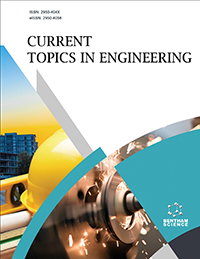
Abstract
The idea of designing novel anti-amyloid therapeutic agents has generated a lot of scientific interest and the potential for treating a variety of human pathophysiologies, such as neurodegenerative and non-neuropathic diseases linked to amyloid protein aggregation. To address this, different small molecules, peptides, surfactants, nanomaterials, etc., have been thoroughly investigated to learn more about their antiamyloidogenic capabilities, offering a great deal of potential for them to show up as future anti-amyloidogenic agents. In contrast to existing smallmolecule analogues, polymers have been envisaged as promising anti-amyloid agents for treating these diseases because of their enthralling physicochemical features and simplicity of functionalisation. This review article emphasises the latest developments in the design of synthetic polymers such as amino acid-conjugated polymers, glycopolymers, zwitterionic polymers and so on reported in the last decade in modulating amyloid aggregation process. Additionally, the structural function and mechanism involved in modifying the aggregation process are highlighted in order to inspire the researchers even more and provide insight into this important field of study.
Keywords: Protein aggregation, Amyloid, Fibril inhibition, Therapeutic agents, Polymers, Anti-amyloidogenic agents.
Current Indian Science
Title:Polymeric Materials as a Promising Platform for Suppressing Protein Aggregation Process
Volume: 2
Author(s): Pooja Ghosh, Anushree Mondal and Priyadarsi De*
Affiliation:
- Polymer Research Centre and Centre for Advanced Functional Materials, Department of Chemical Sciences, Indian Institute of Science Education and Research Kolkata, Mohanpur-741246, Nadia, West Bengal, India
Keywords: Protein aggregation, Amyloid, Fibril inhibition, Therapeutic agents, Polymers, Anti-amyloidogenic agents.
Abstract: The idea of designing novel anti-amyloid therapeutic agents has generated a lot of scientific interest and the potential for treating a variety of human pathophysiologies, such as neurodegenerative and non-neuropathic diseases linked to amyloid protein aggregation. To address this, different small molecules, peptides, surfactants, nanomaterials, etc., have been thoroughly investigated to learn more about their antiamyloidogenic capabilities, offering a great deal of potential for them to show up as future anti-amyloidogenic agents. In contrast to existing smallmolecule analogues, polymers have been envisaged as promising anti-amyloid agents for treating these diseases because of their enthralling physicochemical features and simplicity of functionalisation. This review article emphasises the latest developments in the design of synthetic polymers such as amino acid-conjugated polymers, glycopolymers, zwitterionic polymers and so on reported in the last decade in modulating amyloid aggregation process. Additionally, the structural function and mechanism involved in modifying the aggregation process are highlighted in order to inspire the researchers even more and provide insight into this important field of study.
Export Options
About this article
Cite this article as:
Ghosh Pooja, Mondal Anushree and De Priyadarsi*, Polymeric Materials as a Promising Platform for Suppressing Protein Aggregation Process, Current Indian Science 2024; 2 : e2210299X290674 . https://dx.doi.org/10.2174/012210299X290674240509111832
| DOI https://dx.doi.org/10.2174/012210299X290674240509111832 |
Print ISSN 2210-299X |
| Publisher Name Bentham Science Publisher |
Online ISSN 2210-3007 |
Call for Papers in Thematic Issues
Advancements in Sustainable Synthesis and Material design towards Greener Chemistry
The thematic issue "Advancements in Sustainable Synthesis and Material design towards Greener Chemistry" explores innovative approaches towards environmentally sustainable practices in organic synthesis and material development. It encompasses a broad spectrum of research, including the design of green synthesis methods that minimize waste and energy consumption, the utilization of renewable ...read more
Recent Advances in Green and Sustainable Developments
To save our loving ‘Mother Nature’ from the ever increasing chemical pollution scientists are continuously modifying their chemical processes to make them sustainable. As a result, last decade has shown a tremendous outburst in modifying organic transformations by following green credentials. On the other hand heterocyclic scaffolds are very important ...read more
Thematic Issue on Unleashing the Potential: Diverse Therapies and Innovative Drug Delivery Systems for Targeting Different Diseases
Delivery systems for drugs have the potential to revolutionize the treatment of various diseases by enhancing drug efficacy, improving patient compliance, and reducing side effects. Review articles focusing on recent approaches and therapeutic applications of these systems can provide valuable insights to researchers and healthcare professionals. The aim of the ...read more
 4
4
- Author Guidelines
- Graphical Abstracts
- Fabricating and Stating False Information
- Research Misconduct
- Post Publication Discussions and Corrections
- Publishing Ethics and Rectitude
- Increase Visibility of Your Article
- Archiving Policies
- Peer Review Workflow
- Order Your Article Before Print
- Promote Your Article
- Manuscript Transfer Facility
- Editorial Policies
- Allegations from Whistleblowers
- Announcements

























